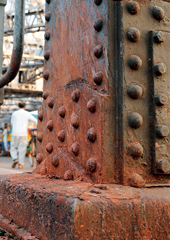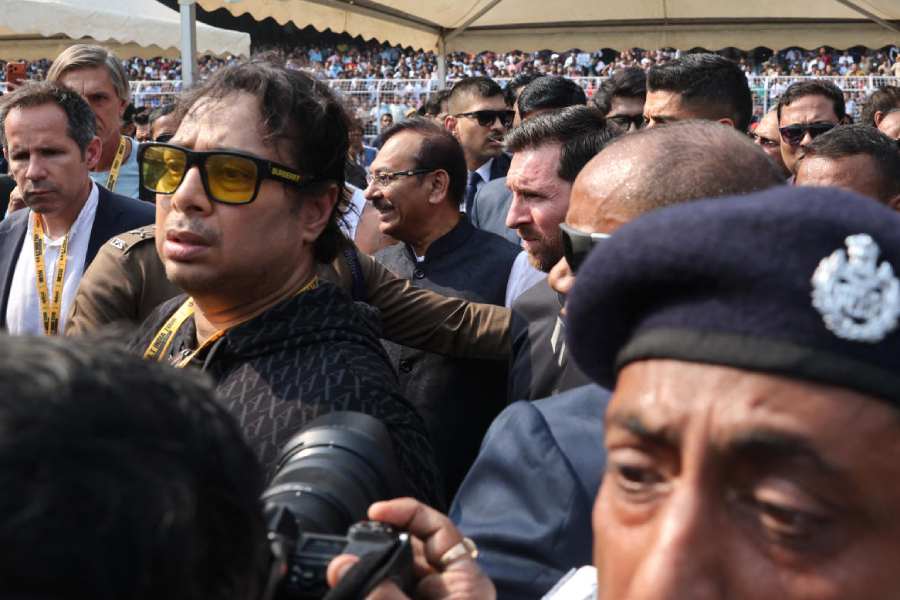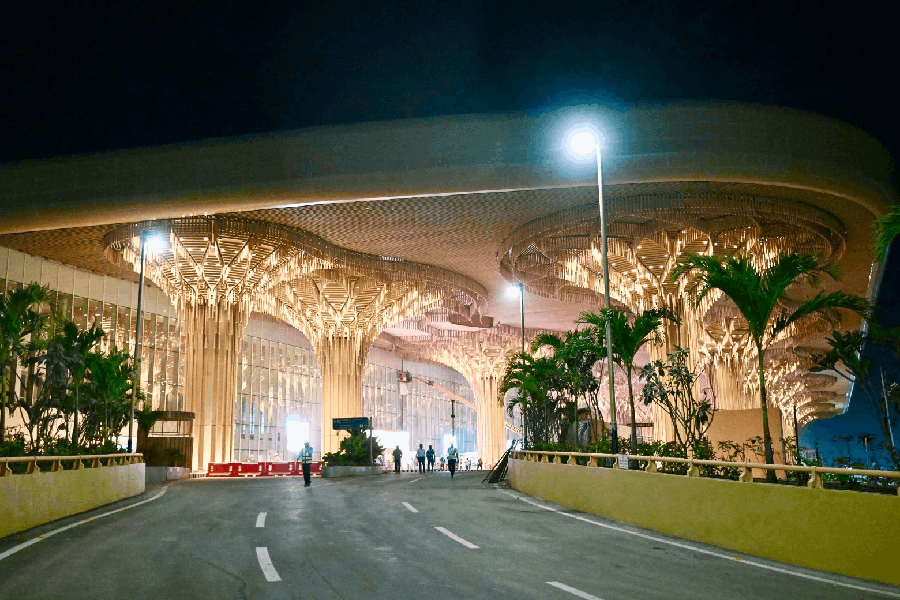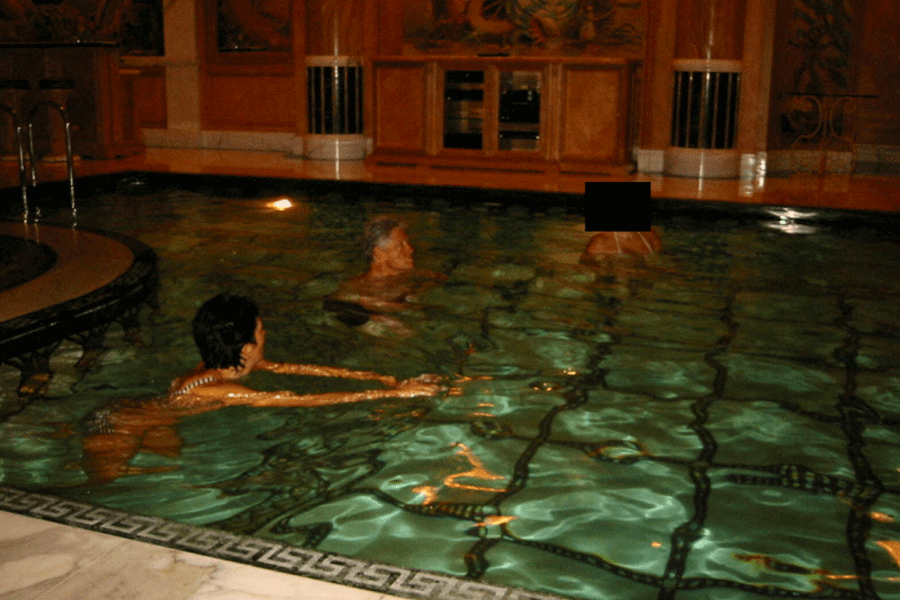 |
 |
| A pillar covered in gutkha-laced spit and (below) a plyboard version of the fibreglass covers that will protect the steel hoods from the spit assault. (Pabitra Das) |
Tiger Woods paid a hefty fine for spitting on a Dubai green, Howrah bridge is coughing up lakhs to save itself from spit.
Calcutta Port Trust, the custodian of the British-built cantilever bridge, is spending Rs 20 lakh on covering the base of the steel pillars with fibreglass casing to prevent gutkha-laced spit from corroding them.
If you can’t stop them, block them — that was apparently the only option left for the port trust authorities after attempts to catch habitual offenders in the act and fine them proved to be a more expensive proposition.
“We do impose fines as and when we spot pedestrians spitting on the base of the pillars, but it’s not feasible to deploy personnel along the length of the bridge just to catch them,” said an officer from North Port police station.
So while spit-o-cracy continues, at least the pillars of the 68-year-old bridge that bears the weight of over a lakh vehicles every day will be safe from corrosion inside the fibreglass casing.
“A ply mould based on the final design was fixed to a hood earlier this week to check whether it fits,” a port trust official said.
Fibreglass casings are being made to cover the base of all 78 hangers and eight diagonal posts. Each casing will be six feet in height and three square feet in diameter.
Metro had first highlighted the spit-o-cracy threat to Howrah bridge on May 24, 2010. A series of on-the-spot reports over the next few weeks showed how incorrigible habitual spitters had become in the absence of any penalty for committing such an act in public.
A technical inspection by port trust officials revealed that the collective assault by the city’s chew-and-spit brigade had reduced the thickness of the steel hoods protecting the pillars from six to less than three millimetres since 2007.
Gutkha contains highly corrosive elements that erode even steel, having the same effect as acid. “The base of all 78 hangers suffered extensive damage over the years with pedestrians treating the bridge as a spittoon. These hangers help transfer the load of the bridge from the deck to the girders. So any damage to the hangers constitutes a threat to the safety of the bridge,” an official said.
Howrah bridge has been designed in such a way that the load first gets transferred to the girders under the belly of the deck, from where the hangers shift the weight to the overhead structure. The hangers, positioned across the 1,500-foot bridge, have hoods at the base to prevent water seeping into the junction of the cross-girders and hangers.
Over the last few months, the port trust authorities contemplated several ways to protect the hoods from corrosion. Fibreglass was chosen because it is washable and not very expensive to replace.
“As fibre glass has hardly any resale value, the risk of these covers being stolen is less. We will be selecting a private agency to wash the fibreglass covers regularly. This will not only prevent corrosion but also give the bridge a cleaner look,” an official said.
Apart from spit, rash driving is a threat to the bridge.
Sources said there had been at least five instances of vehicles ramming into the pillars or railings of the bridge every year since 2008.
The port authorities had set up surveillance cameras in October 2008 and the CCTV footage revealed that most mishaps occurred between midnight and 5am.











